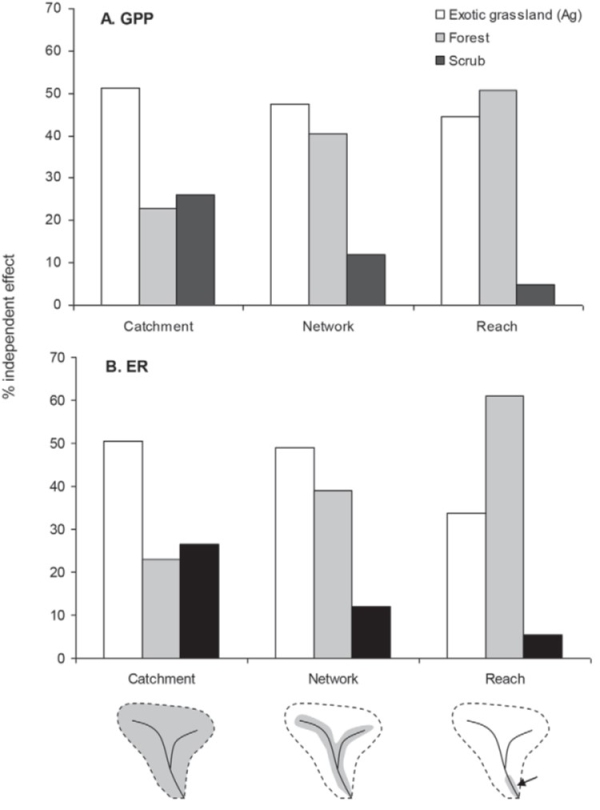Intensification of agriculture within a catchment is often associated with increases in the trophic state (biological productivity) of waterways, known as eutrophication. NIWA reports on the relative roles of landscape and local factors on the trophic state of 21 Canterbury streams.
Agricultural land use contributes to eutrophication in multiple ways. Clear-cutting for the development of pasture or crop land increases light availability for in-stream photosynthesis, which promotes algal and macrophyte (aquatic plant) growth. Increased nutrient inputs from fertiliser and/or animal waste runoff also stimulate algal growth.
However, local factors, such as the condition of riparian vegetation, can play an important role in determining the extent of eutrophication. We investigated the relative roles of landscape versus local factors on stream trophic state in 21 streams in the Canterbury Plains region of the South Island, New Zealand. The sites were selected across two independent gradients of agricultural intensity and riparian cover. Trophic state was measured as community metabolism, or gross primary production (GPP), and ecosystem respiration (ER).
Hierarchical partitioning analysis indicated that, among the landscape variables, GPP and ER were most closely correlated with per cent agricultural land use in the catchment. Among the local variables, GPP and ER were most closely correlated with macrophyte cover and shading by riparian vegetation.
Which variables had the greatest effect on metabolism varied with spatial scale. At a catchment scale, per cent agricultural land use had the largest influence on trophic state. But at the stream reach level, local variables, particularly shading from riparian vegetation, had a stronger effect on trophic state than the landscape variables.
These results highlight the potential of riparian buffers as tools to mitigate eutrophication in streams and rivers within agricultural catchments.
Percent of independent effects from hierarchical partitioning analysis for land use variables on gross primary production (GPP) (A) and ecosystem respiration (ER) (B) at three different scales. Catchment = land cover in drainage catchment, network = land cover within 100m of the stream network, reach = vegetation cover within a 10m riparian zone along the 150 – 200m study reach. For both GPP and ER, the influence of tree cover increases relative to agricultural cover as the scale decreases. Ag. = agriculture. From Burrell et al. (2014).
External collaborators: Teresa Burrell (University of Canterbury), Jonathan O’Brien (University of Canterbury, and Canisius College, Buffalo, New York), Kevin Simon (University of Auckland), Jon Harding (University of Canterbury), Angus McIntosh (University of Canterbury)


